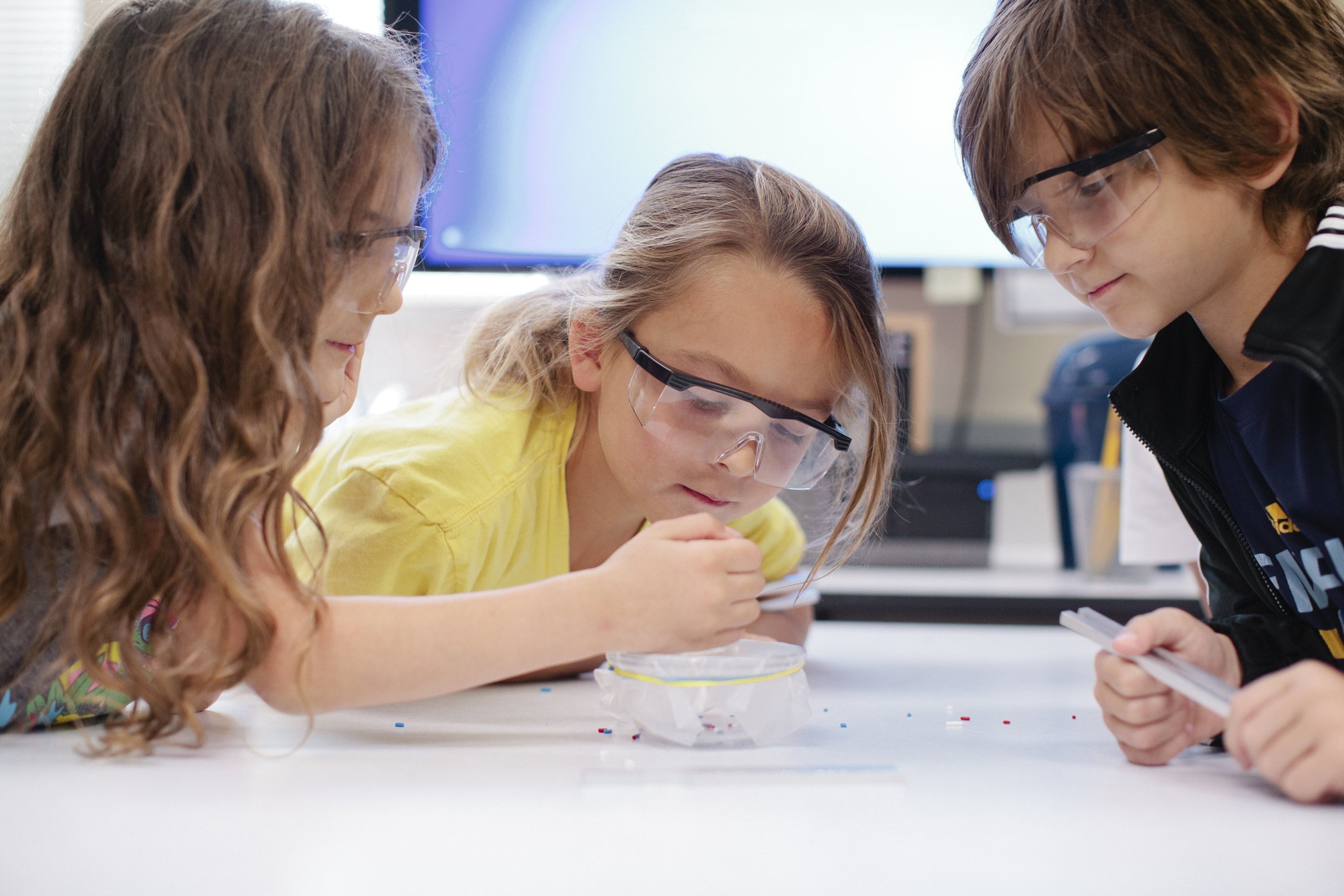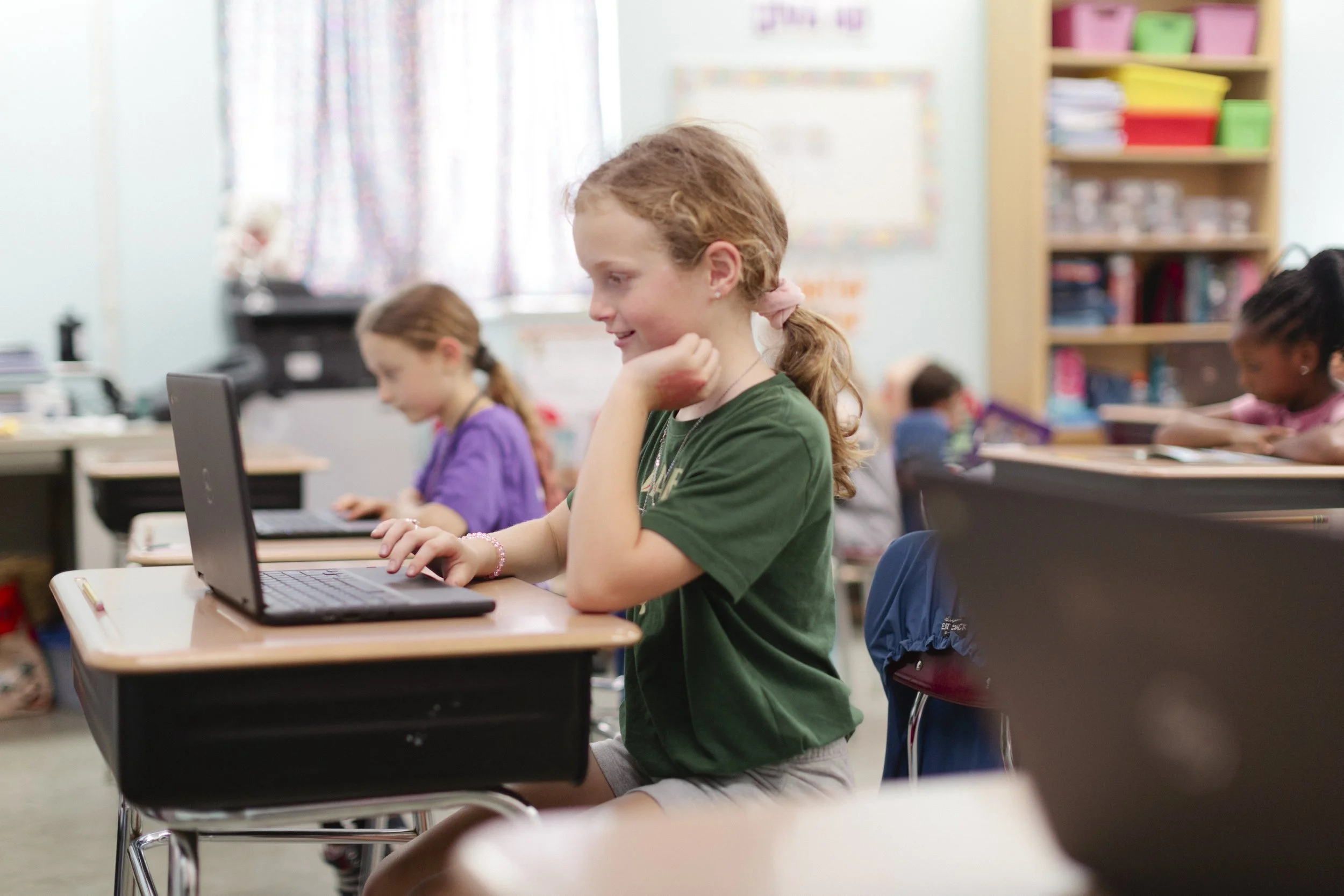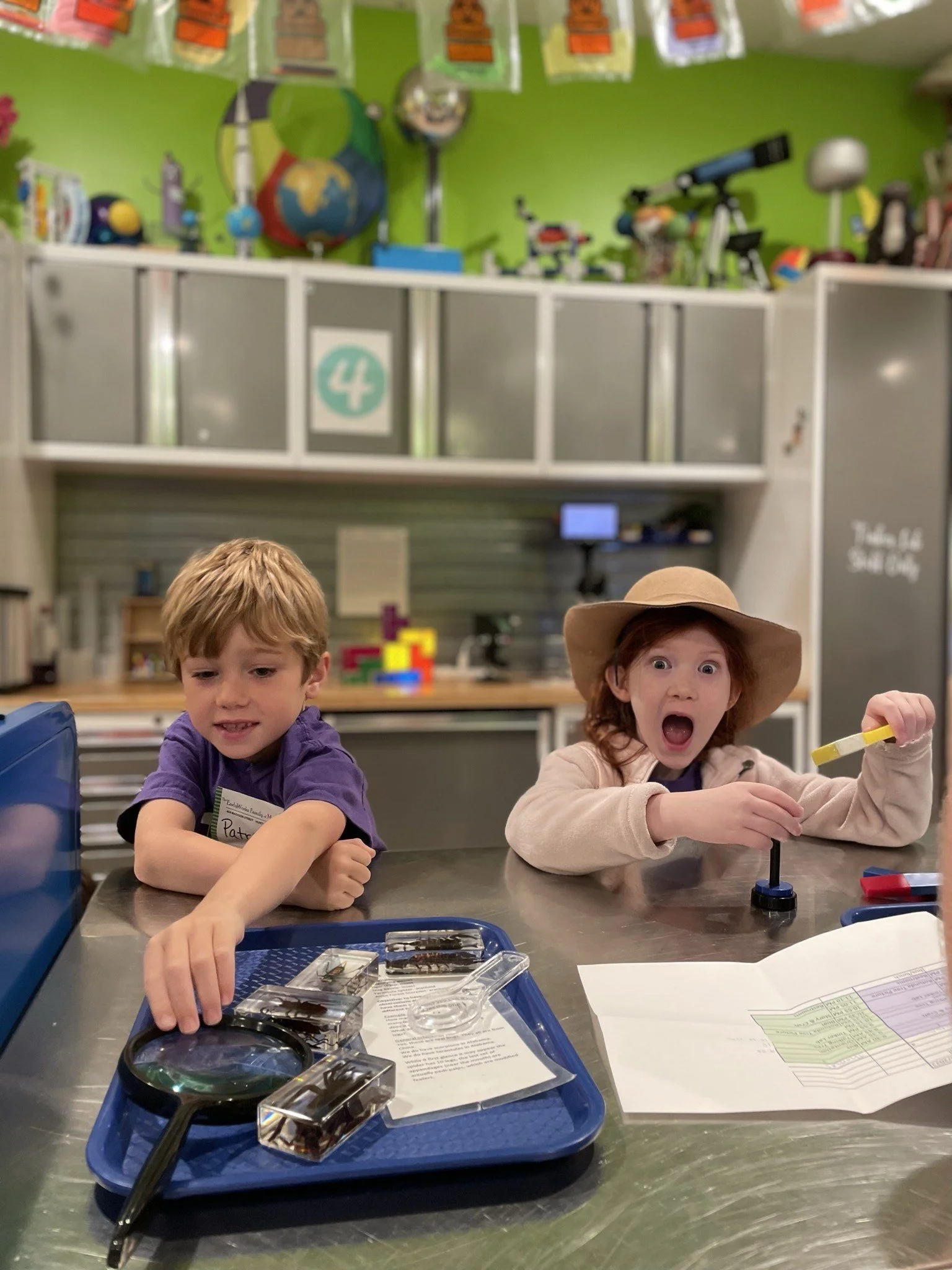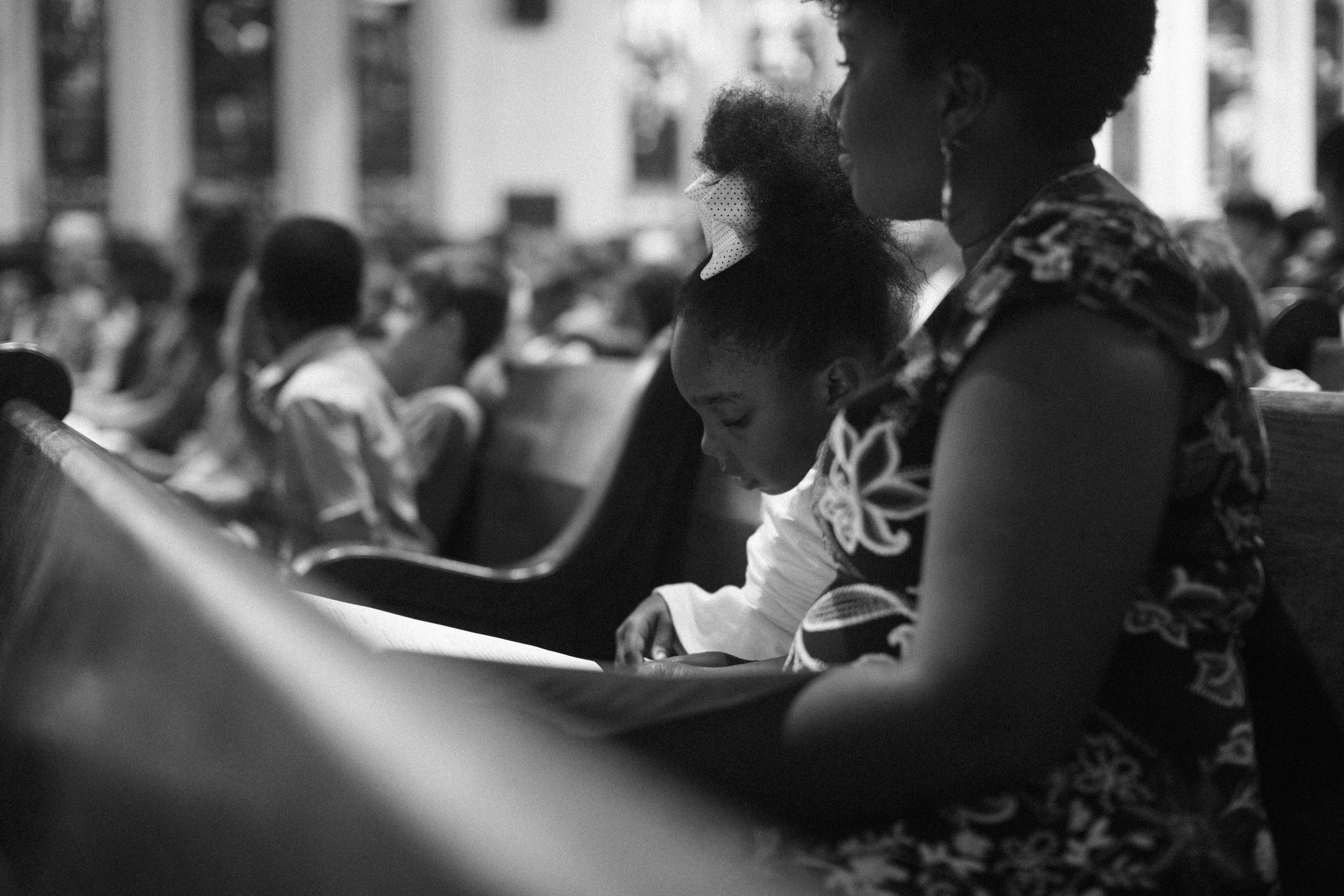
EARLY ELEMENTARY
Early Elementary Students Grow in Understanding, Curiosity, and Capability.
1st, 2nd, & 3rd Grade
Building on the strong foundation set in the Pre-Kindergarten and Kindergarten programs, the Early Elementary curriculum continues to push and challenge students in developmentally appropriate ways beyond their perceived capabilities. Our faculty focuses on creating a safe and engaging learning environment for our students, where not only do students develop their critical thinking, communication skills, and problem-solving skills, they have fun while they're doing it!
Our Curriculum
First Grade
Our 1st graders are beginning to build problem-solving skills and become more interested in how the classroom intersects with real life.
-
In first grade, Advent students build on skills developed in Kindergarten to become fluent readers by year’s end. New comprehension strategies are introduced to help students understand and discuss the content of the texts they encounter. Students are able to write summaries and identify main ideas. Fiction becomes a reading focus in first grade as students navigate classic texts like “Frog & Toad” in individual, whole class, and small group settings. First graders continue with the phonics curriculum, which guides spelling instruction for the year. In writing, students are introduced to the concept of a paragraph as they build stamina in writing lengthier responses to prompts. Students also begin focusing on revising and editing.
-
Students continue their math journey by mastering numbers 0-100 and demonstrating multiple representations of numbers from 0 to 20. Students understand and learn the properties of addition and subtraction (strategies, quick facts, inverse relationships, etc.). Students delve deeper into time, money, and measurement. Additionally, students learn to identify and understand place value, skip counting, and repeating patterns. Students are also able to interpret and use basic graphs and charts as representations of data.
-
Students study major landmarks, past and current presidents, communities, and national holidays. They learn about the character traits of engaged citizenship. Students also study aspects of transportation and farming.
-
Students are exposed to the three major disciplines: Life Science, Earth & Space Science, and Physical Science. Students focus on human health, animals, plants, weather, space, matter, forces & energy, and simple machines.
-
Students are introduced to artists in history. They continue to develop their hand eye coordination by the "see it-do it" which is essential in many activities like letters, placement, writing, spacing. Students work on fine motor skills and hand eye coordination. Students are also introduced to perspective and how to see and create real life on paper or with paper.
-
Students are introduced to artists in history. They continue to develop their hand eye coordination by the "see it-do it" which is essential in many activities like letters, placement, writing, spacing. Students work on fine motor skills and hand eye coordination. Students are also introduced to perspective and how to see and create real life on paper or with paper.
-
Students are introduced to artists in history. They continue to develop their hand eye coordination by the "see it-do it" which is essential in many activities like letters, placement, writing, spacing. Students work on fine motor skills and hand eye coordination. Students are also introduced to perspective and how to see and create real life on paper or with paper.
-
Item description
Second Grade
Our energetic 2nd graders are developing their critical thinking skills and want to take on more responsibilities and leadership opportunities, which we encourage and support.
-
Second grade students at Advent develop reading skills through a balance of literature and informational text. In addition to building comprehension through strategies like visualizing, predicting, and inferring, students learn the elements and structure of literature. In this year, readers go beyond basic comprehension of a text and are given tools to form opinions about what they read. They are introduced to using evidence from texts to support their opinions and analysis. Through informational text, students develop a complex vocabulary related to science, social science, and the natural world. Reading fluency is supported by completing the final level of the phonics curriculum. Second grade students craft and revise narratives and are given tools to analyze their own writing as they progress towards becoming more independent writers.
-
Students are introduced to multiplication tables and build on their knowledge and experience in addition and subtraction up to three-digit numbers. Students study whole number operations and number stories. Students continue to grow their understanding of time, money, measurement, geometry, and data and utilize these skills to solve problems in a variety of ways.
-
Students study communities, maps, continents, and land forms. They are introduced to states and historical biographies.
-
Students continue studying in the three major science disciplines, focusing specifically on habitats, the history of the earth, the shape of our world, plants, water, erosion, and matter.
-
Students continue their study of artists and improving their hand-eye coordination, fine motor skills, and social development. Students build on their knowledge of the elements of art and perspective. As they grow and develop, their art making activities move beyond exploring with their senses and begin to evolve into symbols that represent real objects, events, and feelings.
-
Second grade students continue to read music and rhythms in standard notation, expand the notes of the treble and bass clef up to two ledger lines, continue composing basic melodies and rhythms, and expand upon musical concepts of expression and intent.
-
Students in second grade build on their knowledge of greetings, manners, and the exchange of French pleasantries. Their vocabulary is expanded through study of French sports, eating customs, and seasonal and weather topics.
-
Third Grade
3rd graders are learning to talk through problems, express themselves in complex sentences, and solve complex problems.
-
In third grade, students extract meaning from increasingly complex texts through thoughtful reading and discussion. Students learn to recognize the features of a wide variety of genres and summarize both literary and informational texts. In writing, students attend to conventions of standard written English through attention to spelling, usage, and grammar while composing logically organized paragraphs to demonstrate understanding of topics they have studied and books they have read.
-
Students develop a mastery of multiplication and division as they utilize various strategies for solving problems within 1,000. Place value, time, money, fractions, geometry, and measurement are other concepts of which students extend their knowledge. Students work on solving real-world problems using basic operations of addition, subtraction, multiplication, and division through a variety of problem solving strategies.
-
Students focus on five themes of geography: location, place, region, movement, and human-environment interaction. Students also study climate, landforms, and water sources. Students increase their understanding of maps and globes, reading and interpreting graphs and charts, and utilizing and applying critical-thinking skills.
-
Students continue to focus on elements of Earth Science, Physical Science, and Life Science. Students learn and gain a deeper understanding of force and motion, weather and climate, electricity and magnetism, plant and animal life cycles, ecosystems, and inheritance of traits.
-
Students create artworks through direct instruction but the focus of most projects shifts to the individual development of ideas through the creative process. Third graders are introduced to charcoal drawing and shading techniques to create drawings with a range of tones. Students deepen their understanding of the color wheel by mixing secondary and tertiary colors independently using acrylic paints. Students practice a variety of hand building techniques such as coil and pinch to create functional and expressive clay objects. Students use art vocabulary in written and verbal response to their own artwork and the artwork of others.
-
Students in third grade expand their note reading up to three ledger lines, learn basic musical intervals, and expand on the ideas of musical concepts of form, expression, and intent in music. They also learn major musical key signatures up to three sharps and flats.
-
Third grade students are re-introduced to many of the concepts from Pre-K through second grade to build mastery of these vocabulary topics. Additionally, third grade students learn how to tell time in French. The year culminates in a French monument project that includes a group presentation including visuals and an oral report.
-
Academic Highlights
Library
In our school library students in first, second, and third grade have the opportunity to check out books in addition to learning research skills and the responsibilities of digital citizenship.
Physical Education
Students in our early elementary program participate in physical education classes throughout the week in addition to their time on the playground and rooftop gym spaces. In P.E. classes, students focus on teamwork, sportsmanship, and general athletic skills.
Technology
Our early elementary students begin to explore formal technology through their academic work. Classroom Chromebooks and other digital tools are introduced to equip students with the appropriate technology skills.
Early Elementary Field Trips
We’ve established field trips as an integral part of our curriculum to allow students to experience learning in real-life settings. Understanding more about the world (and city and state!) around them empowers our students to more deeply understand and apply the concepts they are learning about in the classroom. Our location in the heart of downtown plays a critical role in our ability to expose students in a safe but meaningful way to the amazing resources we have right at our doorstep.
-
Alys Stephen Center - Alabama Symphony
Huntsville Early Works Museum
Children’s Theatre
Birmingham Botanical Gardens
Tuscaloosa Hands on Museum -
Majestic Caverns
Children’s Theatre
American Village
Jones Valley Teaching Farm -
Farm Day at Dee River Ranch
Children’s Theatre
Jones Valley Teaching Farm
McWane Science Center
Etiquette and Afternoon Tea at the City Club







